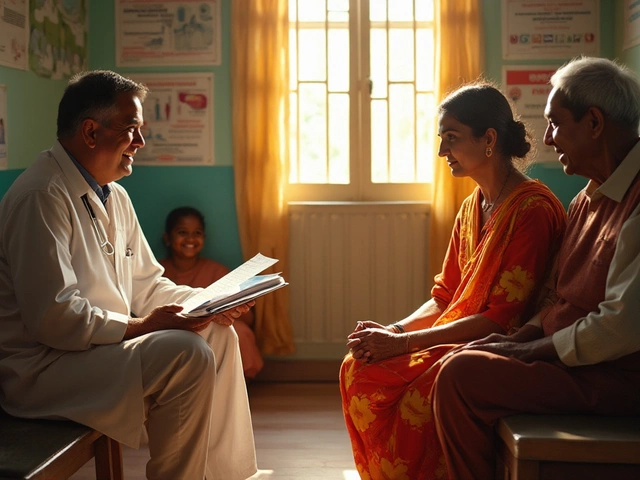Ayurveda Treatment Duration: How Long Will It Take?
If you’re thinking about starting an Ayurvedic program, the first question is usually “how long does it last?” The answer depends on the type of therapy, the condition you’re treating, and how committed you are to the routine. Below you’ll find a quick guide to the most common time frames so you can plan realistically and avoid surprises.
Short‑Term Ayurvedic Therapies
Most people begin with simple, daily practices that can be fit into a busy schedule. Abhyanga, the oil massage, is often recommended for 15‑30 minutes each morning or evening. Practitioners usually suggest a minimum of two weeks to feel any shift in energy or joint comfort. Herbal teas and powders (like ginger, turmeric, or ashwagandha) are typically taken for 1‑3 months, depending on the goal—whether it’s boosting immunity or easing stress. You’ll notice subtle changes after a few weeks, but full benefits often appear after the third month.
Another short‑term option is dinacharya (daily routine) coaching. A practitioner will set a 7‑day plan covering wake‑up time, tongue scraping, and a light breakfast. Stick to the routine for at least 30 days before judging its impact. Most users report better digestion and sleep within the first two weeks, but the habit solidifies after a month.
Extended Programs and Panchakarma
For deeper detoxification or chronic issues, Panchakarma is the go‑to Ayurvedic intensive. A full Panchakarma cycle usually runs 2‑4 weeks, with each day dedicated to a specific procedure—like Vamana (therapeutic vomiting) or Virechana (purifying castor oil). The exact length depends on age, constitution, and severity of the imbalance. Younger, healthier individuals may finish in 10‑14 days, while older patients often need a full month for safe recovery.
After the intensive phase, a maintenance phase begins. This can last 3‑6 months and includes lighter therapies such as weekly oil massages, seasonal diet adjustments, and periodic herb rotations. The idea is to keep the body in balance without overwhelming it. Many clinics schedule follow‑up visits every 4‑6 weeks to tweak the plan based on how you’re feeling.
When you’re on a long‑term regimen, patience is key. Results aren’t instant; they build up like layers of a sandcastle. Keep a simple journal: note energy levels, sleep quality, and any aches. If you notice steady improvement after 4‑6 weeks, you’re on track. If nothing changes, discuss dosage or technique tweaks with your practitioner.
Finally, remember that Ayurveda respects your individual rhythm. There’s no one‑size‑fits‑all timeline. Start with a clear goal—whether it’s easing a migraine, improving digestion, or reducing stress—then match the therapy length to that goal. Short‑term practices keep you motivated, while extended programs give you the deep reset you might need.
Armed with these time frames, you can schedule appointments, prepare meals, and set realistic expectations. Ayurveda isn’t a quick fix, but with the right duration you’ll see steady, lasting benefits that fit your lifestyle.

How Long Does Ayurveda Take to Work? Realistic Timelines and Expectations
Curious about how long Ayurveda takes to show results? Discover who benefits fastest, timelines for common conditions, and tips to support real healing.




